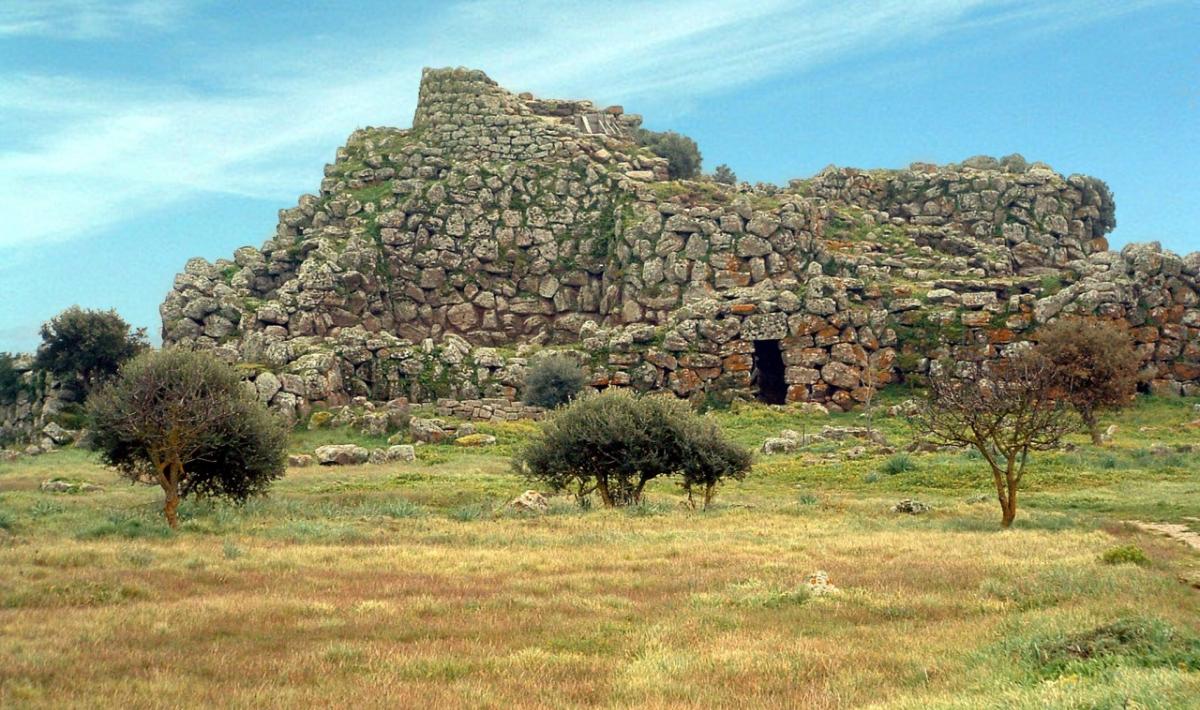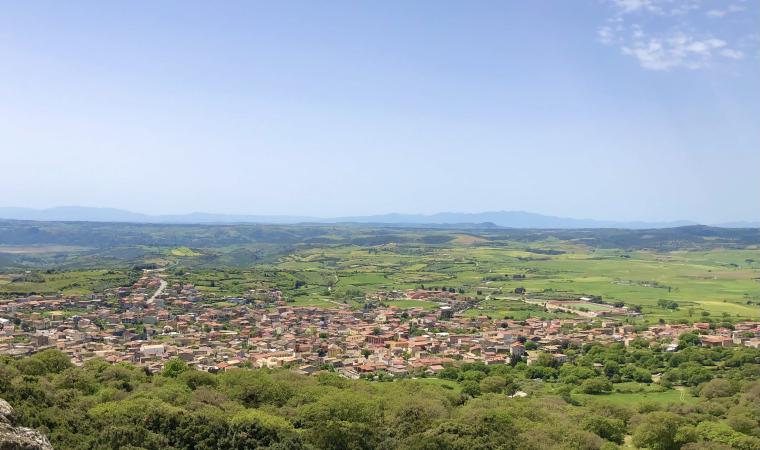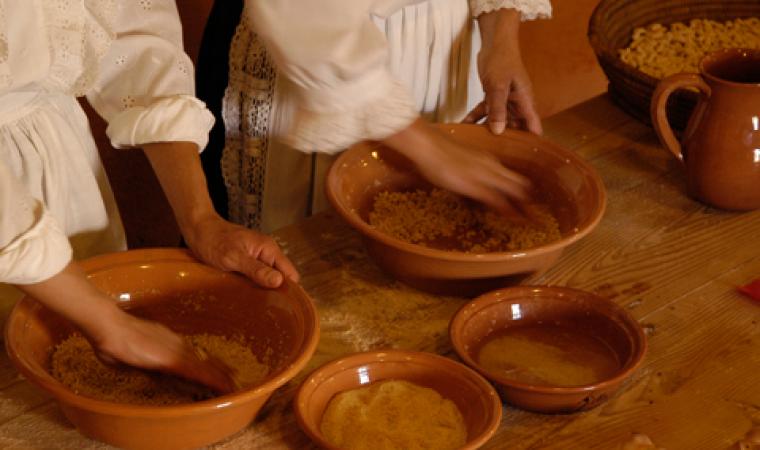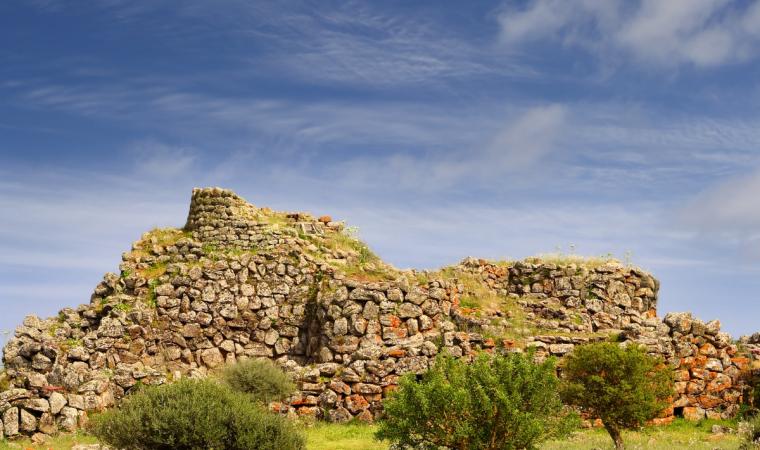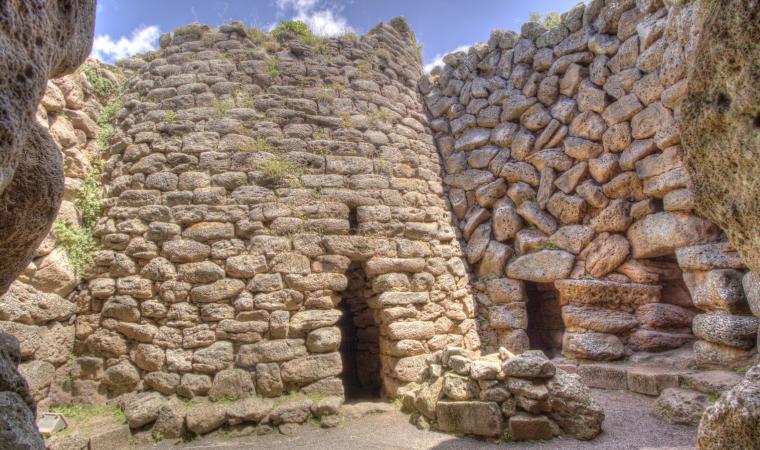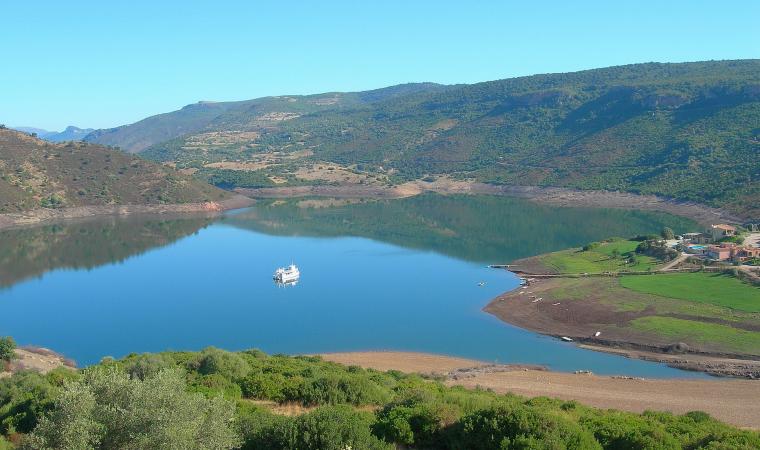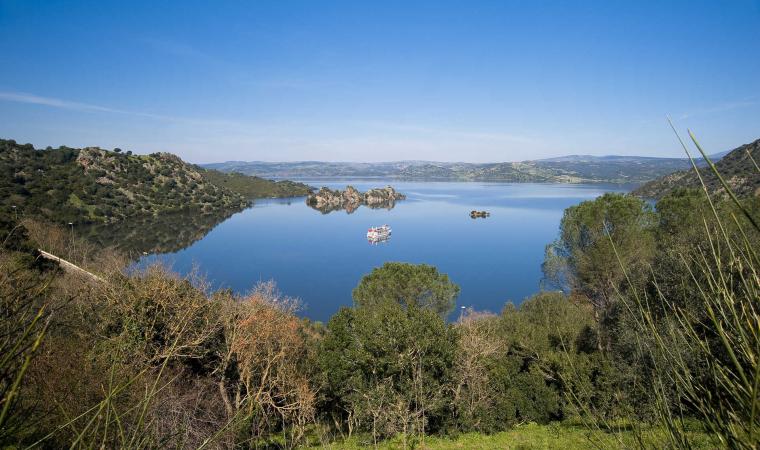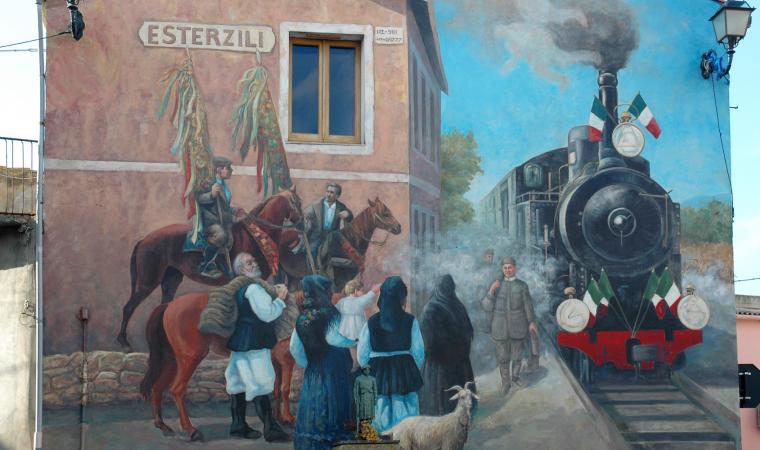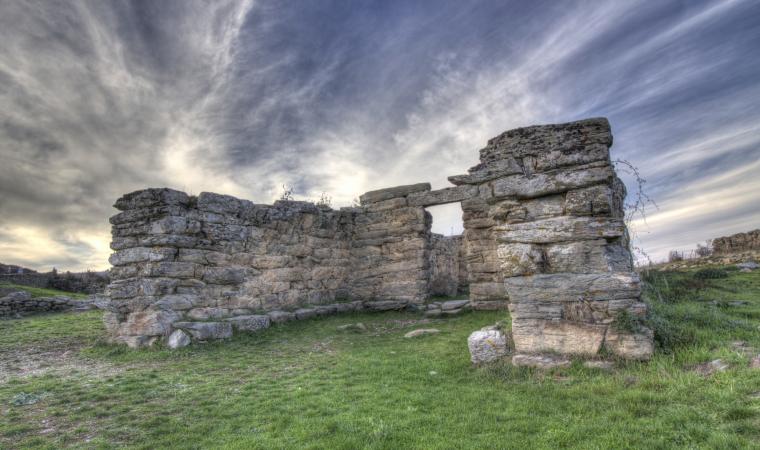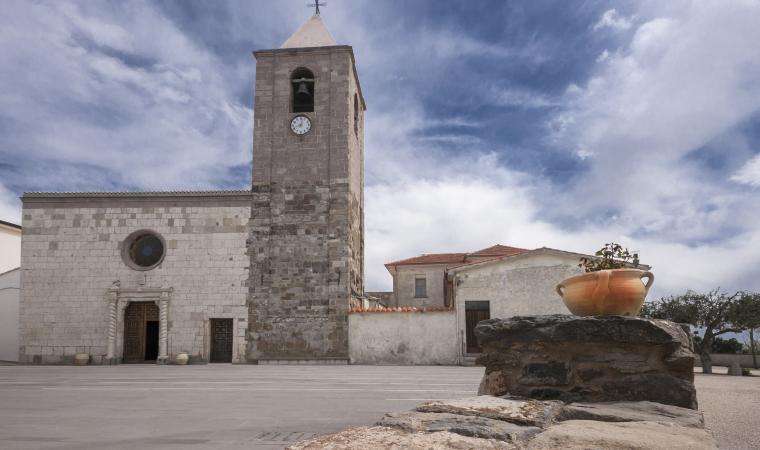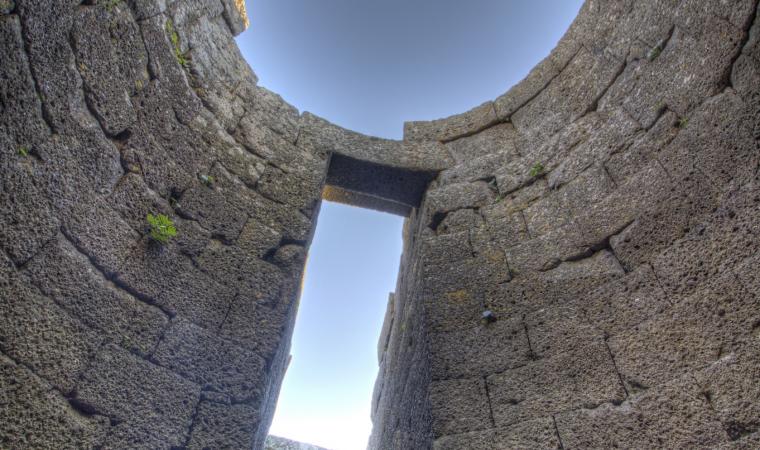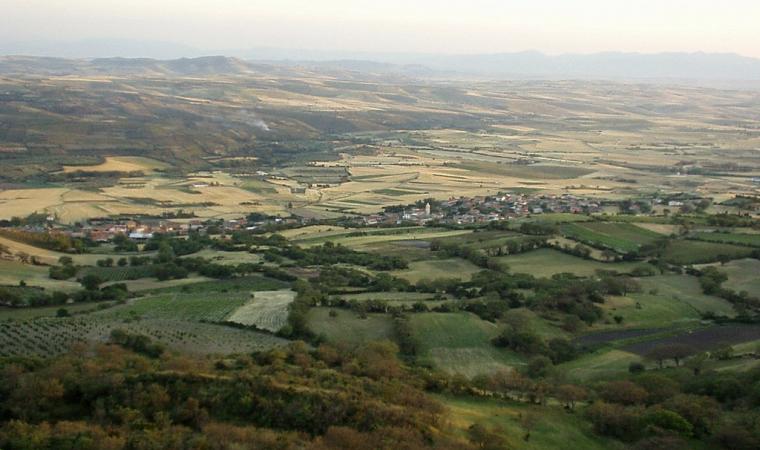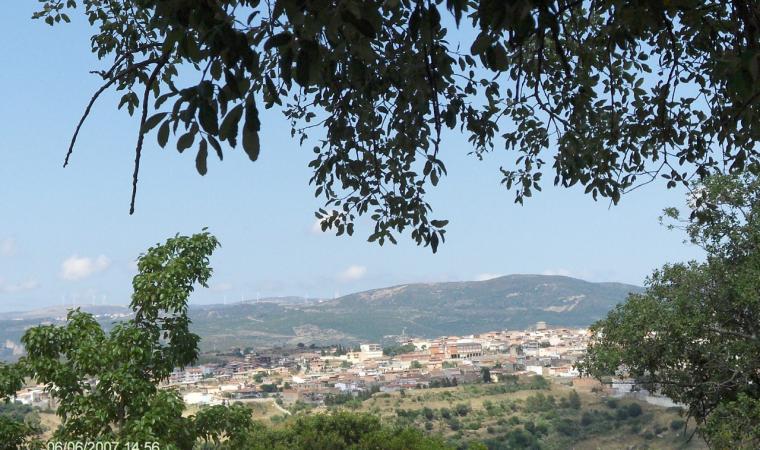Orroli is the 'land of lakes': Lake Mulargia is set between lush hills that slope down to its shores and sink into its water, while the valleys and the sky are reflected in Lake Flumendosa, with rocks emerging from the waters and spectacular contrasts of lights and shadows. The surrounding nature includes forests, waterfalls, grottoes and gorges, all ready to be discovered along trekking itineraries. You can admire the landscapes on board the Trenino Verde (Little Green Train) and by taking trips by boat or canoe. The territory is famous for an extraordinary concentration of vestiges from the past, above all the Arrubiu Nuraghe, one of major protohistoric monuments in Western Europe, which 'lived' between the 14th and 9th centuries BC. It is known as the 'Red Giant' because of its majesty and the reddish hues of the lichens that give it its colour.
The complex stands out on a plateau, surrounded by lakes, with a central tower 15 metres high (originally double this height) surrounded by a bastion with five towers, also surrounded by a wall with another seven towers. In the courtyards, there are platforms, cisterns, fireplaces, steps, corridors and covered spaces. All around, there are the remains of huts. In the 2nd century BC, the Romans adapted the Nuraghe, making it into a workshop where wine was produced. The Casa del Nuraghe Arrubiu 'tells' the story of a territory inhabited since the 4th Millennium BC: the Arrubiu was the central Nuraghe, and around it there were satellite Nuraghi. In the museum, there are artefacts and relics on show from the Middle Neolithic age to the Early Middle Ages. The Park of De Su Motti, overlooking the village, is both a natural and an archaeological attraction. Enclosed by a basalt amphitheatre and covered in holm oaks, centuries-old downy oaks and Mediterranean scrub, it contains a priceless heritage. There is a path accompanying you to a necropolis of 15 Domus de Janas, dug out of the rock faces of Sa Carona Arrubia. On the adjacent plain, you will see the poly-lobed Nuraghe of Is Allonis, one of the two in the park. The other is Su Motti, surrounded by tombs and a Neolithic village and the only one in the territory with a corridor layout. The area is dotted with rocks that erupted from Mount Pitziogu, from which they descend, overhanging, covered in red carpets of lichens, in contrast with the orchids and cyclamens of the meadows. The plateau of Taccu Idda is not to be missed, from which you can observe enchanting landscapes and the grotto of Sa Ucca Manna, a great chasm with long stalactites, where the waters from the nearby springs and torrents converge.
Amidst the village's stone houses extending along the Pranemuru plateau, inhabited by over two thousand Orroli residents, the ancient manor houses stand out and are used as museums and artisan workshops. The old town centre is located around the parish church of San Vincenzo Martire, restructured in Gothic-Aragonese style in the 16th century over ruins that can be traced all the way back to a 6th century Christian temple. Next to it, its bell tower, made of red porphyry stands out.

